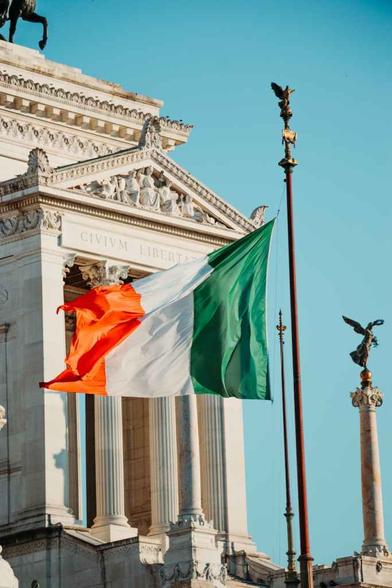Lugh
He’s also known as Lug, or in modern Irish, Lu. He’s the Irish manifestation of the Pan-Celtic god, Lugus. His Welsh equal is Lleu Llaw Gyffes. The Roman & Greek equals are Mercury & Hermes.
He’s a member of the Tuatha De Danann. The Tuatha De Danann is a group of supernatural beings. He’s shown as a warrior, a king, a master craftsman, & a savior. He’s also associated with skill & mastery in multiple disciplines, including the arts.
Lug also has connections with oaths, truth & the law, & rightful kingship. He’s got an association with intelligence. Lugh is linked with the harvest. The harvest festival was named after him: Lughnasadh.
His most common titles are: Lamfada (Modern Irish: Lamhfhada; “long hand” or “long arm,” probably because of his skill with a spear or his ability as a ruler.) & Samildanach (Modern Irish: Samhaildanach, “equally skilled in many arts”). Sometimes this has been anglicized as “Lew of the Long Hand.”
Lugh was/is the son of Cian & Ethniu (or Ethliu). He’s the material grandson (meaning through his mother’s line) of the Fomorian tyrant, Balor. Lugh kills Balor in the Battle of Mag Tuired. Lugh’s son, the hero Cu Chulainn, was believed to be an incarnation of Lugh.
Lugh has a few magical items. He has an unstoppable fiery spear, & a sling stone. He owns a hound named Failinis. Failinis was given to Lugh by the sons of Tuireann.
Lugh is said to have invented ball games, horse racing, & fidchell. Fidchell is a board game popular with the ancient Celts. It’s played with 2 people who move an equal number of pieces across a board.
Lugh is usually pictured as a youthful warrior, being very large, very beautiful, & being a spear-wielding horseman. He’s also described as a tall young man with bright red cheeks, white sides, a bronze-colored face & blood-colored hair. His appearance is compared to the sun in 1 version of the story.
Lugh’s dad, Cian, was also a member of the Tuatha De Danann. His mom, Ethniu, was the daughter of Balor, of the Fomorians. The Fomorians are a supernatural race, often pictured as hostile, monstrous beings. In 1 story, Cian & Ethniu’s union is a dynastic marriage. This followed an alliance between the Tuatha De Danann & the Fomorians.
In another tale, Cian gives a boy Lugh to Tailtiu, queen of the Fir Bolg, to foster Lugh. The Fir Bolg are the 4th group of people to settle in Ireland. Lugh, the foster-son of Tailtiu, is described as the “son of the Dumb Champion.”
In a folktale recounted in 1835 tells of the birth of a grandson of Balor would grow up to kill his grandfather. The grandson is unnamed, his dad is named Mac Cinnfhaelaidh. The manner of Balor’s death is different. But it has been taken as a version of the death of Lugh. This was adapted by such as Lady Gregory.
In this tale, Baldor hears a druid’s prophecy that he’d be killed by his own grandson. To attempt to stop this from happening, he imprisons his only daughter in the Tor Mor (Great Tower) of Tory Island. She was cared for by 12 women. These 12 women were to prevent her from EVER meeting or even learning of men’s existence.
On the mainland, Mac Cinnfhaelaidh owns a magic cow, who gave such abundant milk that everyone, including Balor, wanted it for themselves. While the cow was in the care of Mac Cinnfhaelaidh’s brother, Mac Samthainn, Balor shows up in the form of a little boy with red hair.
Balor, as the boy, tricks him into giving Balor the cow. Looking for revenge, Mac Cinnfhaelaidh calls on a fairy woman (Leanna Sidhe) called Birog. Birog transports him, by magic, to the top of Balor’s tower, where he seduces Ethniu.
In a matter of time, she gives birth to triplets. Baldor gathers up the triplets in a sheet & puts them in a whirlpool to drown. 2 of the babies drown but 1 baby unwittingly gets dropped into the harbor. The harbor baby is rescued by Birog. She takes him (the baby) to his dad. The baby daddy gives the surviving baby to his uncle (baby daddy’s brother, Gavida the Smith, as a foster kid.
As a young man, Lugh travels to Tara to join the court of King Nuada of the Tuatha De Danann. The doorkeeper won’t let him in unless he has a skill he can use to serve the king. He offers his services as a wright, hero, smith, champion, swordsman, harpist, poet, historian, sorcerer, & craftsman.
Each time, he was rejected because the Tuatha De Danann already had someone with those skills. Lugh asked the doorkeeper if they had anyone with all those skills simultaneously. The doorkeeper had to admit defeat. Lugh joins the court & is appointed Chief Ollam of Ireland. He wins a flagstone-throwing contest against Ogma, the champion. He entertains the court with his harp.
At this time, the Tuatha De Danann are oppressed by the Fomorians. Lugh was amazed at how they meekly accepted their oppression. King Nuada wonders if Lugh could lead them to freedom. Light is given command over the Tuatha De Danann. Lugh begins making preparations for war.
Cian, Lugh’s dad, & Tuireann are old enemies. One day, Tuireann’s sons, Brian, Iuchar, & Iucharba spotted Cian in the distance & they decided to kill him. They find him, but in the form of a pig. But Cian tricked the brothers into letting him transform back into a person before they killed him.
This gave Lugh the legal right to claim recompense for a father rather than just a pig. When they try to bury him, the ground spits his body out 2x before keeping him down, finally. Eventually confessing that it’s a grave to Lugh.
Lugh holds a feast & invites the brothers. During it, he asks them what they would order as compensation from the unaliveing of their dad. They say that leaving this mortal coil would be the only just demand. Lugh agrees. Then he accuses them of the murder of his dad, Cian.
Lugh sends them on a series of seemingly impossible quests/tasks. Like our old friend, Hercules. The brothers go on an adventure. They get through all the quests, except 1. This last quest will surely kill them. Tuireann tries to stop it, but Lugh demands they go ahead with this final quest.
Lugh uses the magical items that Tuireann sons gathered to lead the Tuatha De Danann in the Second Battle of Mag Tuireadh against the Fomorains. Before the battle, Lugh asked every person (men & women) in his army what they brought to the fight exactly. He then did his Braveheart speech. This speech was SO motivating that everyone’s spirit was elevated to that of a king or lord.
King Nuada was unalived by Balor in the ensuing battle. Lugh then faces Balor. Balor opens his poisonous eye that also kills any who look upon it. But Lugh is ready, he shoots a sling. The slung rock/stone drives Balor’s eye out the backside of his head, like all the way out, through his skull. This ends up unaliveing Balor & starts causing chaos on the Fomorian army behind.
After this victory, Lugh finds Bres. Bres was a half-Fomorian former king of the Tuatha De Danann. Bres was alone & unprotected on the battlefield. He begs for his life. If he was spared, he promised that the cows of Ireland always gave milk.
The Tuatha De Danann passed on that offer. He counter-offers with promising 4 harvests in 1 year. But the Tuatha De Danann lets him know that 1 harvest a year was cool with them. However, Lugh spares his life on the condition that he teaches the Tuatha De Danann how & when to plough, sow, & reap.
One of his (Lugh’s) wives, Buach, had an affair with Cermait (the son of the Dagda). Lugh unalived him in revenge. But Cermait’s sons (Mac Cuill, Mac Cecht, & Mac Greine) unalived Lugh in return. They speared him through the foot. Then drowning him in Loch Lugborta in County Westmeath. He ruled for 40 years. Cermait was revived, later, by his dad, the Dagda, who used the smooth, or healing, end of his staff to bring Cermait back to life.
One-Time Monthly YearlyMake a one-time donation
Make a monthly donation
Make a yearly donation
Choose an amount
$1.00 $5.00 $10.00 $1.00 $5.00 $10.00 $5.00 $10.00 $15.00Or enter a custom amount
$Your contribution is appreciated.
Your contribution is appreciated.
Your contribution is appreciated.
DonateDonate monthlyDonate yearly
#1835 #Balor #Birog #Bres #Brian #Buach #Celts #Cermait #ChiefOllamOfIreland #Cian #CuChulainn #DruidicProphecy #DynasticMarriage #Ethliu #Ethniu #Failinis #Fidchell #FirBolg #Fomorian #Fomorians #FosterKid #GravidaTheSmith #Greek #Hermes #Hound #Ireland #Irish #Iuchar #Iucharba #KingNuada #LadyGregory #Lamfada #Lamhfhada #LeananSidhe #LewOfTheLongHand #LleuLlawGyffes #LochLugborta #Lu #Lug #Lugh #Lughnasadh #Lugus #MacCecht #MacCinnfhaelaidh #MacCuill #MacGreine #Mercury #OgmaTheChampion #PanCeltic #PoisonousEye #QueenTailtiuOfTheFirBolg #Reincarnation #Roman #Samhaildanach #Samildanach #SecondBattleOfMagTuireadh #SonsOfTuireann #Tara #TheDagda #TorMor #ToryIsland #TuathaDéDanann #Tuireann #Welsh


 🏳️🌈
🏳️🌈